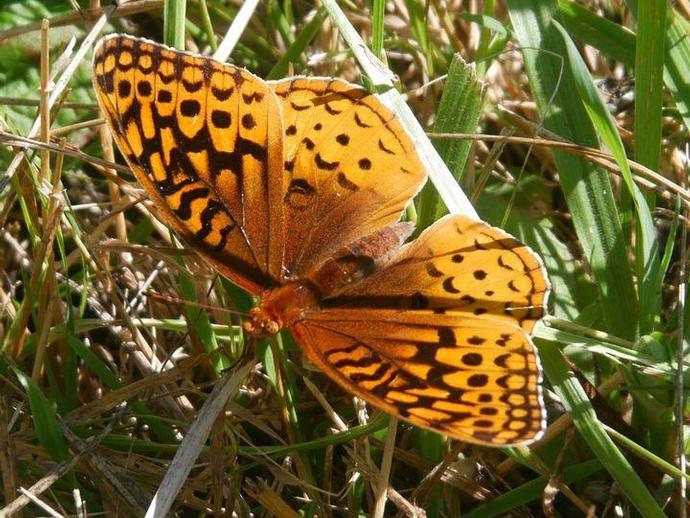October 11, 2021
We're reaching into the archives for this Monday's #BenInNature update presented by our friends at Carter Bank & Trust! The following post was originally published on August 15, 2020.
Speyeria cybele, commonly known as the great spangled fritillary, is a fairly common North American butterfly that can be found just about everywhere in the contiguous U.S. except for the southwest. They can be found in fields, valleys, pastures, and open woodland, but they're most common in habitats with plenty of moisture. The adults feed on the nectar from a variety of flowers, including milkweeds, thistles, mountain laurel, and others.
Interestingly, their life cycle is quite similar to the related and much rarer Diana fritillary (Speyeria diana) that I posted a few weeks back. Both species live in similar habitats and the caterpillars of both species feed on native violet plants, yet one is found throughout much of the country while the other is limited to the Ozarks and the southern Appalachians.
This is not the easiest butterfly to identify because there are several related species that look remarkably similar (to my eyes, anyway!), including the Aphrodite fritillary (Speyeria aphrodite), the Atlantis fritillary (S. atlantis) and the northwestern fritillary (S. hesperis). There are also nine subspecies of the great spangled fritillary! Thankfully, I can always pester VMNH Associate Curator of Invertebrate Zoology Dr. Kal Ivanov to confirm my insect IDs. Thanks Dr. Ivanov!
ABOUT #BenInNature
Social distancing can be difficult, but it presents a great opportunity to become reacquainted with nature. In this series of posts, Administrator of Science Ben Williams ventures outdoors to record a snapshot of the unique sights that can be found in the natural world. New updates are posted Monday - Friday, with previous posts highlighted on the weekends. This series of posts is made possible thanks to the support of VMNH Corporate Partner Carter Bank & Trust (www.cbtcares.com).
NATURE PHOTO IDENTIFICATIONS
If you discover something in nature that you would like help identifying, be sure to message us right here on Facebook with a picture (please include location and date of picture) and we'll have our experts help you identify it!

 Hours & Admissions
Hours & Admissions Directions
Directions

